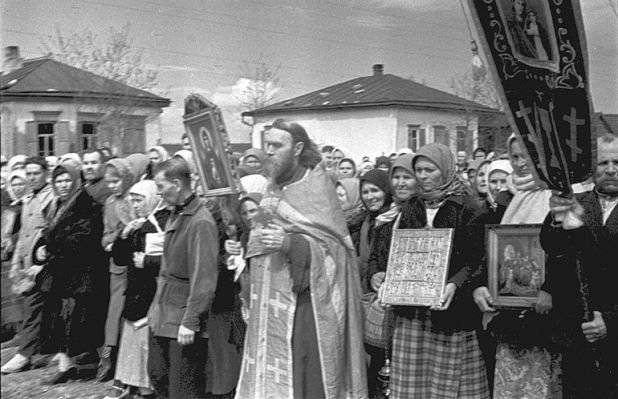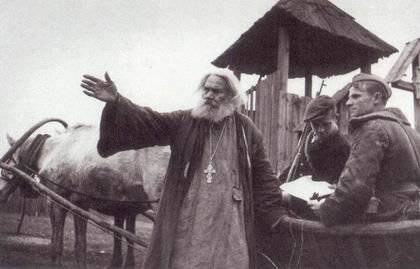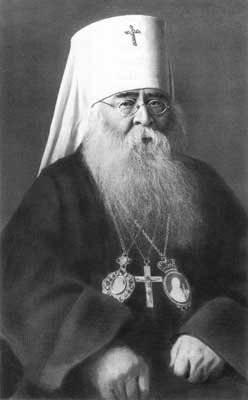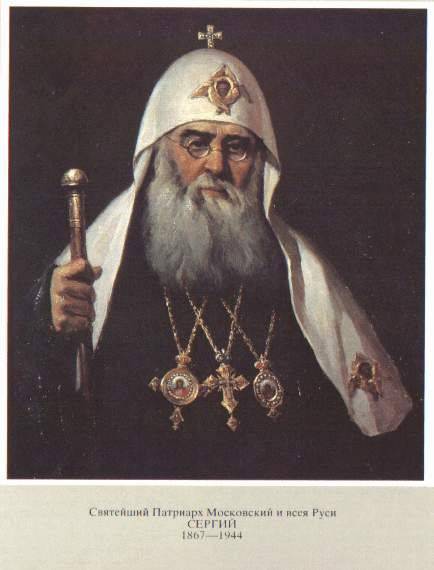Church and Great Patriotic War

The church is often called the "second power", most secular kings perceived Orthodoxy as a tool to maintain their own autocracy. The authorities tried not to spoil relations with the Orthodox Church. Representatives of the clergy had privileges, a special status. Orthodoxy has always brought peace of mind and a sense of protection from above to the difficult life of the Russian peasant. The church was engaged in charity, in parochial schools, children were given primary education. Often, she stood up for the offended, one way or another, gave her assessment of political changes, that is, took an active position in the life of the state.
 The Bolsheviks, when they came to power, did not speak openly from the standpoint of atheism, although their leaders had long lost touch with religion. The first events also did not say anything about the colossal breaking that would be launched in the coming years. IN AND. Lenin wrote 20 in November 1917 in the appeal "To all working Muslims of Russia and the East": "Muslims of Russia, Tatars of the Volga region and Crimea, Kyrgyz and Sarts of Siberia, Turkestan, Turks and Tatars of the Transcaucasus, Chechens and Highlanders of the Caucasus, all those mosques and the chapels of which were destroyed, whose beliefs and customs were trampled upon by the kings and oppressors of Russia! From now on, your beliefs and customs, your national and cultural institutions are declared free and inviolable. "
The Bolsheviks, when they came to power, did not speak openly from the standpoint of atheism, although their leaders had long lost touch with religion. The first events also did not say anything about the colossal breaking that would be launched in the coming years. IN AND. Lenin wrote 20 in November 1917 in the appeal "To all working Muslims of Russia and the East": "Muslims of Russia, Tatars of the Volga region and Crimea, Kyrgyz and Sarts of Siberia, Turkestan, Turks and Tatars of the Transcaucasus, Chechens and Highlanders of the Caucasus, all those mosques and the chapels of which were destroyed, whose beliefs and customs were trampled upon by the kings and oppressors of Russia! From now on, your beliefs and customs, your national and cultural institutions are declared free and inviolable. "One of the first decrees of the Soviet government was a decree on the separation of the church from the state from 23 in January 1918. The decree itself did not carry anti-religious, anti-church coloring. In most European countries, the church was separated from the state in the era of bourgeois revolutions. Western society is, of course, secular. But in most countries, the state officially supports those religious organizations that most correspond to national interests and traditions. In England, it is the Anglican Church (its head is the Queen), in Sweden, Norway, Denmark - the Lutheran; in Spain, Portugal - Catholic, etc. As for the Eastern societies, they are characterized by the inseparability of the secular and religious spheres of life. Consequently, the act of separating the church from the state in Russia meant movement in the western channel.
However, this act was accepted and in fact became the legislative basis of the persecutions against the church. The first to come under attack was the Orthodox Church as the official church of old Russia. In addition, other churches were located in territories where there was not yet Bolshevik power. The closure of churches, the seizure of church property, the massacre of churchmen began in the first months after the October 1917 events. Patriarch Tikhon 13 of October 1918 addressed the SNK with a message in which he wrote: "... Bishops, priests, monks and nuns are executed innocent, but simply on the basis of a vague accusation of some vague and indefinite counter-revolutionism. "
On the territory of pre-revolutionary Russia, 78 thousand Orthodox churches, 25 thousand mosques, more than 6 thousand synagogues, 4,4 thousand Catholic churches, more than 200 Old Believer churches of Georgia and Armenia operated. The number of churches in Russia by 1941 decreased by 20 times. Most of the temples were closed in 30-ies. By 1938, more than 40 thousand prayer buildings were closed. These are not only Orthodox churches, but also mosques, synagogues, etc. In 1935-1936. the government banned the activities of the Synod and the Journal of the Moscow Patriarchate. There were no active temples in the 25 areas, and there were 20-1 temples in the 5 areas.
Clergymen were also destroyed. IN AND. Lenin, in a secret instruction from 19 of August 1922, wrote: "The greater the number of representatives of the reactionary clergy and the reactionary bourgeoisie, we manage to shoot on this occasion, the better." Thus, the clergy and the bourgeoisie — they are one-order concepts for Lenin. This is so from the point of view of civilization. Creating a new could only be successful if the spiritual foundation was destroyed, its carriers were destroyed.
In 1926, the Union of Atheists of the USSR was created to fight religion, which was later renamed the Union of Militant Atheists. The number of its members grew: 1926 was about 87 thousand people; 1929 - more than 465 thousand; 1930 g. - 3,5 million people; 1931 - approximately 51 million. The increase in the number of active fighters against religion shows how rapidly the spiritual sphere has been destroyed. It is curious that the pro-Western trends in Christianity, especially such as Baptism, which seemed silly and savage, were persecuted most cruelly. However, it was not possible to eliminate religion.
 Semi-suffocated religious denominations were state-owned, subordinated to party-state control and carried out in their activities only that which did not contradict socialist ideology, that is, in practice there was no separation from the state, as provided for by the 1918 Decree, but the subordination of the church to the state.
Semi-suffocated religious denominations were state-owned, subordinated to party-state control and carried out in their activities only that which did not contradict socialist ideology, that is, in practice there was no separation from the state, as provided for by the 1918 Decree, but the subordination of the church to the state.In an effort to keep their inner world in balance, many people stubbornly clung to traditional religious beliefs. Anti-religious campaigns, achieving some success, in some cases caused the opposite reaction. The previously banned materials from the 1937 All-Union Population Census show that, despite the obvious fear of finding adherence to religion, a significant part of the population admitted that they believed in God. Out of almost 30 million illiterate adults (older than 16 years), more than 25 million people (84%) have registered as believers. Of the 68,5 million literate population, 30 million (44%) were also believers.
The generations that grew up during the Soviet era had no idea about the role of traditional religions in society, perceived the activities of church organizations negatively. However, the part of the society that has lost touch with the traditional religion perceived a new one. It had its own attributes: red corners, portraits and monuments of leaders, etc. Its ritual, its dogma. Marxism-Leninism was only an outer shell, under which the traditional values of Russia were often hidden.
The idea of the messianic, saving role of Russia was transformed into the idea of the USSR, as the vanguard of the world revolution, which should pave the way to the future for all peoples and help them on this difficult path. Internationalism has in fact turned into a basis for a tough Russification policy, imposing a Russian model. Leaders who were perceived as carriers and interpreters of higher values, also turned into an object of worship. The process of charismatization of the leaders unfolded immediately and gained strength as the Bolsheviks in power consolidated. Gradually V.I. Lenin turned into a charismatic leader, and then, after death, was canonized as the new Christ or the prophet Muhammad.
IN AND. Lenin always behaved like a prophet, surrounded by disciples and followers, and not as the leader of a political party. It is well known that he did not tolerate in the Bolshevik Party and in his entourage people who did not agree with him, showed independence in their judgments and behavior. This resulted in permanent splits, exceptions, delimitations, beginning with the II Congress of the RSDLP and to the end of his life.
The formation of the image of a charismatic leader began after the Bolsheviks came to power. However, during the life of Lenin managed a little. In the full sense of the charismatic leader, he almost became a god after death. "Lenin lived, Lenin lives, Lenin will live!" - this slogan could be met both on the streets of the capital and in a small village. What is not "Christ is Risen!"
The new leader I.V. Stalin went on to change as a loyal disciple, loyal Leninist. His charisma occurred in the 30s. He became a god during his lifetime. His portraits hung everywhere, monuments were erected in cities and towns. Cities, streets, schools, factories, collective farms, divisions, regiments, etc. were named after him. The press glorified the leader. Here are the lines from the pages of the newspaper "Pravda". 8 January 1935 G.: "Long live the one whose genius led us to unprecedented success - the great organizer of the victories of the Soviet power, the great leader, friend and teacher - our Stalin!". 8 March 1939 g .: "May the father live, long live our father - Stalin-sun!"
The deification of the leaders gave the "holiness" of the regime. In the mass consciousness, this meant the adoption of new values and new life orientations. The system, which largely rested on violence, acquired a spiritual basis.
It is characteristic that during the war years a stake was made on the Russian people. Russian patriotism has become one of the most important sources of victory. The Russian theme was constantly addressed by I.V. Stain, especially in the first, most difficult period of the war, 6 in November 1941, he spoke of the impossibility of defeating "... the great Russian nation, the nation of Plekhanov and Lenin, Belinsky and Chernyshevsky, Pushkin and Tolstoy, ... Suvorov and Kutuzov."
 Christianity always carried the charge of great moral force, which was especially important during the war years. Religion and strength were found in religion for life and work in the most difficult conditions of war. The Russian Orthodox Church called for humility and patience, for mercy and fraternity. The war showed the best features of Russian Orthodoxy.
Christianity always carried the charge of great moral force, which was especially important during the war years. Religion and strength were found in religion for life and work in the most difficult conditions of war. The Russian Orthodox Church called for humility and patience, for mercy and fraternity. The war showed the best features of Russian Orthodoxy.In 1943, the orders of A. Nevsky, A. Suvorov, M. Kutuzov, other prominent Russian military commanders, naval commanders were instituted, the St. George ribbon was introduced, the pre-revolutionary form of the Russian army was returned. Orthodoxy gained more freedom than other confessions. Already 22 June 1941, the Patriarchal Locum Tenens, Metropolitan Sergius, addressed the believers, calling for the defense of the Motherland to weapons in hand, take part in fundraising for the defense fund.
A number of telegrams of representatives of the Orthodox clergy with reports on the transfer of funds for defense in the very first months of the war appeared on the pages of the central newspapers Pravda and Izvestia, information about the work of the Orthodox Church was also published, biographies of the newly elected patriarchs Sergius and Alexy were printed. That is, the patriotic activity of the Church was covered in the press and recognized by the authorities. Dozens of clergymen, including 6 archbishops and 5 bishops, were freed from the camps.
At Easter, 1942 of the year in Moscow allowed free movement around the city all night. In 1942, the first Bishops' Council for the entire war was assembled in Ulyanovsk. In the spring of 1943, the government opens access to the icon of the Iberian Mother of God, which was brought from the closed Donskoy monastery to worship in the Resurrection Church in Moscow.
For the period from 1941 to 1944. the church contributed more than 200 million rubles to the country's defense fund. In the very first years of the war, more than three million rubles were raised in the churches of Moscow for the needs of the front and defense. 5,5 million rubles were collected in the churches of Leningrad. The church communities of Nizhny Novgorod for 1941-1942 collected more than four million rubles in the defense fund. The Novosibirsk diocese for the first half of 1944 raised about two million rubles for the needs of wartime. With the funds raised by the Church, an air squadron named after Alexander Nevsky and tank Column named after Dmitry Donskoy.
Here are some more examples. Vladyka Bartholomew, the archbishop of Novosibirsk and Barnaul, urged people to donate to the needs of the army, performing divine services in the churches of Novosibirsk, Irkutsk, Tomsk, Krasnoyarsk, Barnaul, Tyumen, Omsk, Tobolsk, Biysk and other cities. Gathering went on the purchase of warm clothes for the soldiers, the maintenance of hospitals and orphanages, the restoration of areas affected by the German occupation and assistance to war invalids.
Metropolitan Alexy of Leningrad remained with his flock in besieged Leningrad throughout the blockade. "... the spirit of unity and enthusiasm, which all Russian people live now, ignites the hearts of warriors," said his appeal to believers on Palm Sunday.
On September 4, 1943, Stalin met with the highest hierarchs of the Orthodox Church. It marked a warming relationship between the authorities and the church. The regime decided to use traditional religion to mobilize forces and means in the fight against an external enemy. By order of I.V. Stalin was given the task of restoring the normal practice of religion at the Bolshevik pace. It was also decided to establish theological academies in Moscow, Kiev and Leningrad. Stalin agreed with the clergy on the need for the publication of church books. Under the patriarch it was decided to form a Holy Synod of three permanent and three temporary members. It was decided to form a Council for the Affairs of the Russian Orthodox Church.
 In general, it should be noted that the war significantly and positively influenced the relations between the Orthodox Church and the Soviet authorities. After the war, the decision of the People's Commissariat of Education on the preferential admission of front-line soldiers to educational institutions was issued. In this case, the church followed the decision of the authorities, then a lot of front-line soldiers studied at the seminary. For example, I.D. Pavlov, the future Archimandrite Kirill, he became confessor of the Patriarch of Moscow and All Russia Alexy II.
In general, it should be noted that the war significantly and positively influenced the relations between the Orthodox Church and the Soviet authorities. After the war, the decision of the People's Commissariat of Education on the preferential admission of front-line soldiers to educational institutions was issued. In this case, the church followed the decision of the authorities, then a lot of front-line soldiers studied at the seminary. For example, I.D. Pavlov, the future Archimandrite Kirill, he became confessor of the Patriarch of Moscow and All Russia Alexy II.During the war, the people used to say that during the offensive on Moscow, they placed the icon of Our Lady of Tikhvin in a plane, the plane flew around Moscow and consecrated the borders, like in Ancient Russia, when the icon was often carried out on the battlefield to protect the country. Even if it was unreliable information, people believed it, which means they were waiting for something like that from the authorities.
At the front, quite often before the battle, the soldiers covered themselves with a sign of the cross - they asked the Most High to protect them. Most perceived Orthodoxy as a national religion. The famous Marshal Zhukov, before the battle, together with the soldiers said: "Well, with God!". The people keep the tradition that Zhukov drove the Kazan icon of the Mother of God on the fronts.
During the “period of change” (1917-1941), the Bolsheviks rejected the traditional Russian religion. But during the war, “time to collect stones”, it was necessary to return to the age-old Russian, traditions helped to unite the people on the basis of common stories, common religion. This is well understood and Hitler. One of his instructions stated that the fascists should prevent the influence of one church on a large area, but the appearance of sects in the occupied territories, as a form of division and separation, should be encouraged.
Stalin did not organize a church revival, he restrained him. In the Pskov region before the arrival of the Germans, there was a 3 temple, and the return of the Soviet troops was 200. In the Kursk region before the Germans was 2, it became - 282, but in the Tambov region, where the Soviet government stood invariably, the 3 temple remained. Thus, the first 18 temples were allowed to open only almost half a year after Stalin met with the metropolitans by a resolution of the Council of Ministers on February 5 of the year 1944. And from the total number of appeals of believers about the opening of churches received in 1944-1947, the Council of Ministers satisfied only 17%.
November 16 The Synod of 1948 was forced to decide to ban the conversion of sermons in churches into the lessons of the Law of God for children. Moreover, at the end of 40-x - the beginning of 50-ies, temples were again selected for clubs and warehouses. In 1951, when harvesting, only in the Kursk region, by order of the district executive committees, about 40 buildings of existing temples were filled with grain for many months. Religious communists and Komsomol members were persecuted. A new wave of arrests of the most active clergymen has gone. For example, in September 1948, Archbishop Manuil (Lemeshevsky) was arrested for the seventh time. If on 1 January 1949, there were 14 447 officially open Orthodox churches in the country, by 1 January 1952, their number decreased to 13 786 (of which 120 were not used for grain storage).
During and after the war, Stalin's policy toward the Church knew two breaks. Today, the positive change in 1943-1944 is often recalled, but one should not forget the new “ice age”, which began in the second half of 1948. Stalin wanted to make Moscow the Orthodox Vatican, the center of all Orthodox churches in the world. But in July 1948, the Pan-Orthodox Conference (with the participation of Metropolitan Elijah) did not lead to the result expected in the Kremlin: the hierarchs of the churches, who were distant from Soviet tanks (first of all Greece and Turkey), showed obstinacy. And Stalin, realizing that he would not be able to use a religious resource in global politics, sharply lost interest in church affairs. So, the cynical pragmatism of the Stalinist church policy during the war and the immediate transition to new persecutions in 1948 indicate that Stalin did not have any ideological crisis, appeal, or return to faith.
For the implementation of the religious policy in the occupied territory, the Nazis were responsible for several departments - from a special ministry of religions right up to military command and the Gestapo. In the occupied territories, at the beginning of the war, the Germans allowed the churches their activities. Some priests accepted fascist culture, motivating it with the fact that in Russia the Church was persecuted. And yet most of the clergymen showed themselves during the war humbly, forgetting past offenses. The Nazis stopped practicing the opening of churches, because the priests conducted patriotic sermons among the population. Now the priests were beaten and shot.
The Orthodox Church was united with the secular authorities in the fight against the Nazis. War declared holy, liberation, and the Church blessed this war. In addition to material assistance, the Church morally supported people, at the front and in the rear. At the front, they believed in the miraculous power of icons and the sign of the cross. Prayers acted as peace of mind. The rear men in prayers asked God to protect their loved ones from destruction. The Orthodox Church made a significant contribution to the general Soviet struggle against the fascists during the Great Patriotic War. The position of the Orthodox Church in Soviet Russia for a time strengthened. But the government followed, first of all, its interests, and this strengthening was only temporary. Ordinary people often believed in God and hoped for him as support from above.
Information